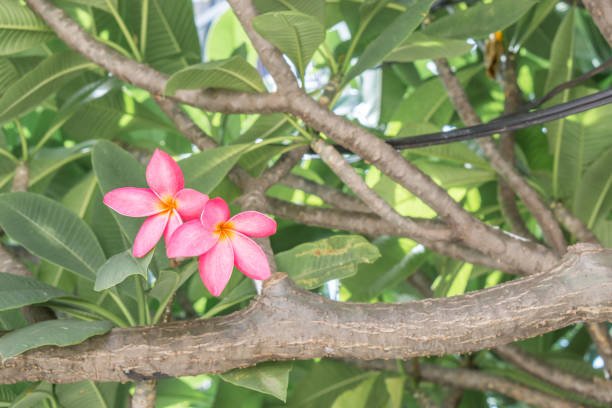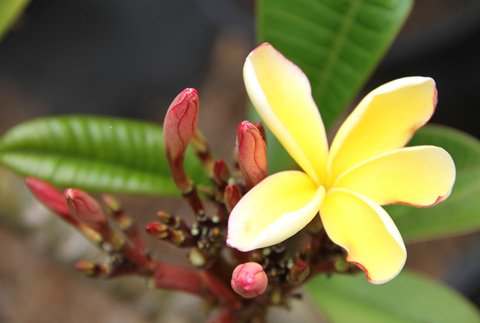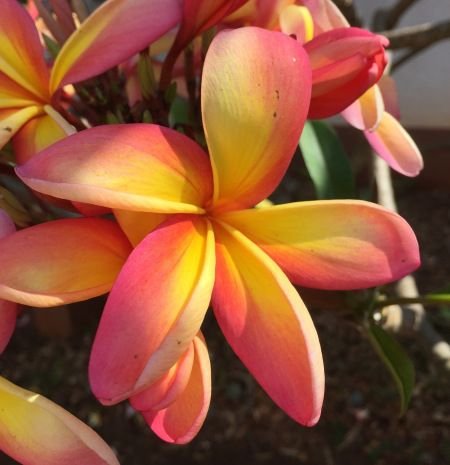
The moment someone mentions the word frangipani my nostrils begin to seek that aroma as if it were a natural physical attraction. For once you’ve breathed in the fragrance of these flowers there’s no going back it will become indelibly stamped upon your senses.But then for the remainder of the year the plant looks like a naked twig taking up space that could be occupied by something far more productive.
It’s this love/hate relationship I have frangipani’s. When it’s flowering there is no competitor. When it’s not you could try to hide the stems with aluminum foil and it would still gain more respect. No folks, the frangipani needs to be grown as an architectural plant. Or, at the very last within a tropical grouping surrounded by flowering canna lillies, bromeliads or tillandsias.

In it’s natural environment the frangipani grows wild in Central and South America – picture the climate! Warm tropical days where frost is never present. Frangipani would grow well in most coastal areas around Australia and the lower third of the US. If kept indoors it may even be grown quite successfully in most other parts as well.
Plumeria rubra, it’s scientific name, are available as evergreens although you rarely see them growing – as most specimens are deciduous. They can grow to nearly 8m (26ft) or more and span 3-4m(13ft), resembling a phallic sculpture during their dormant season.
Their gorgeously fragranted flowers aren’t just limited to the common white with yellow centres either. They range from dusted apricots through coral pinks and even extend the palette through to dark reds which makes their desirability even greater.
